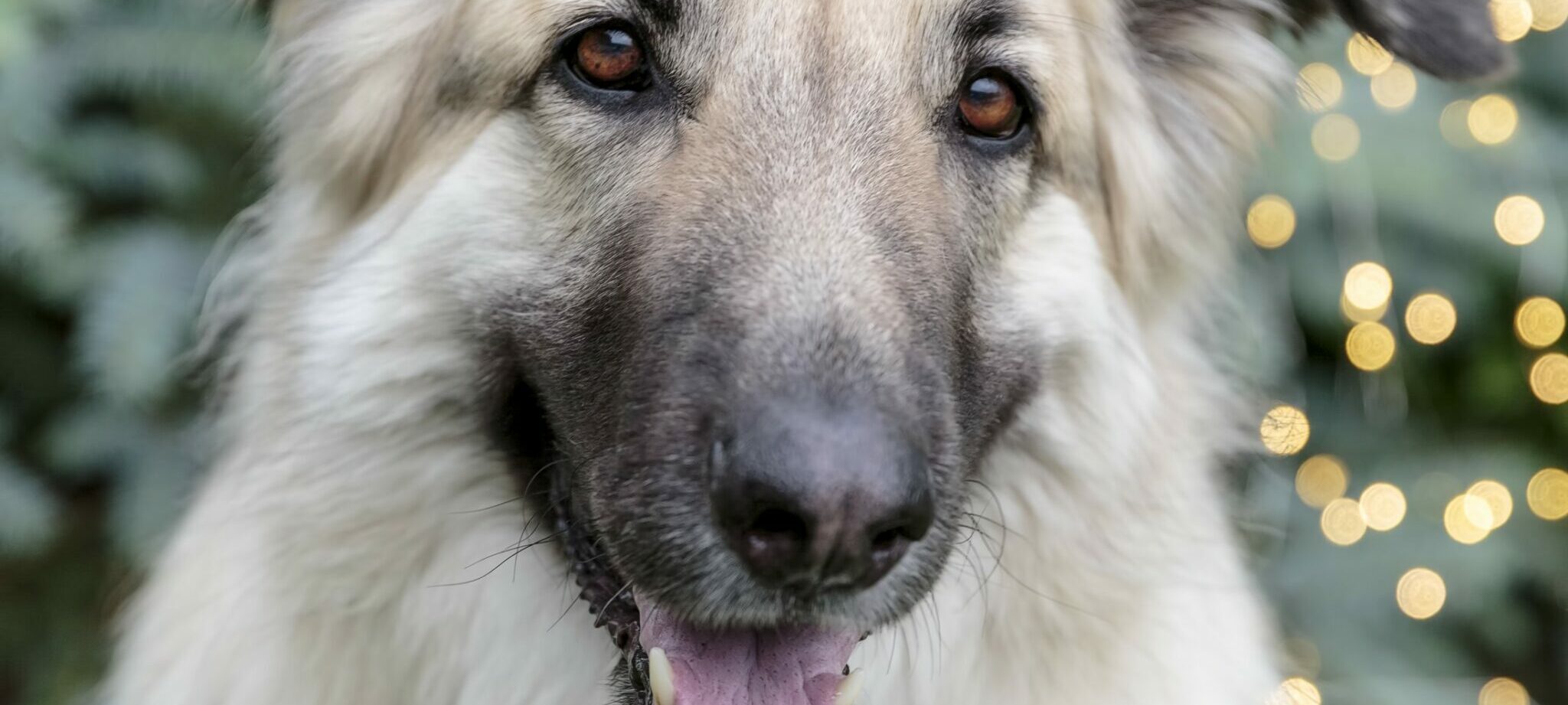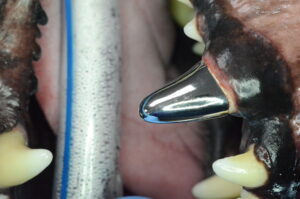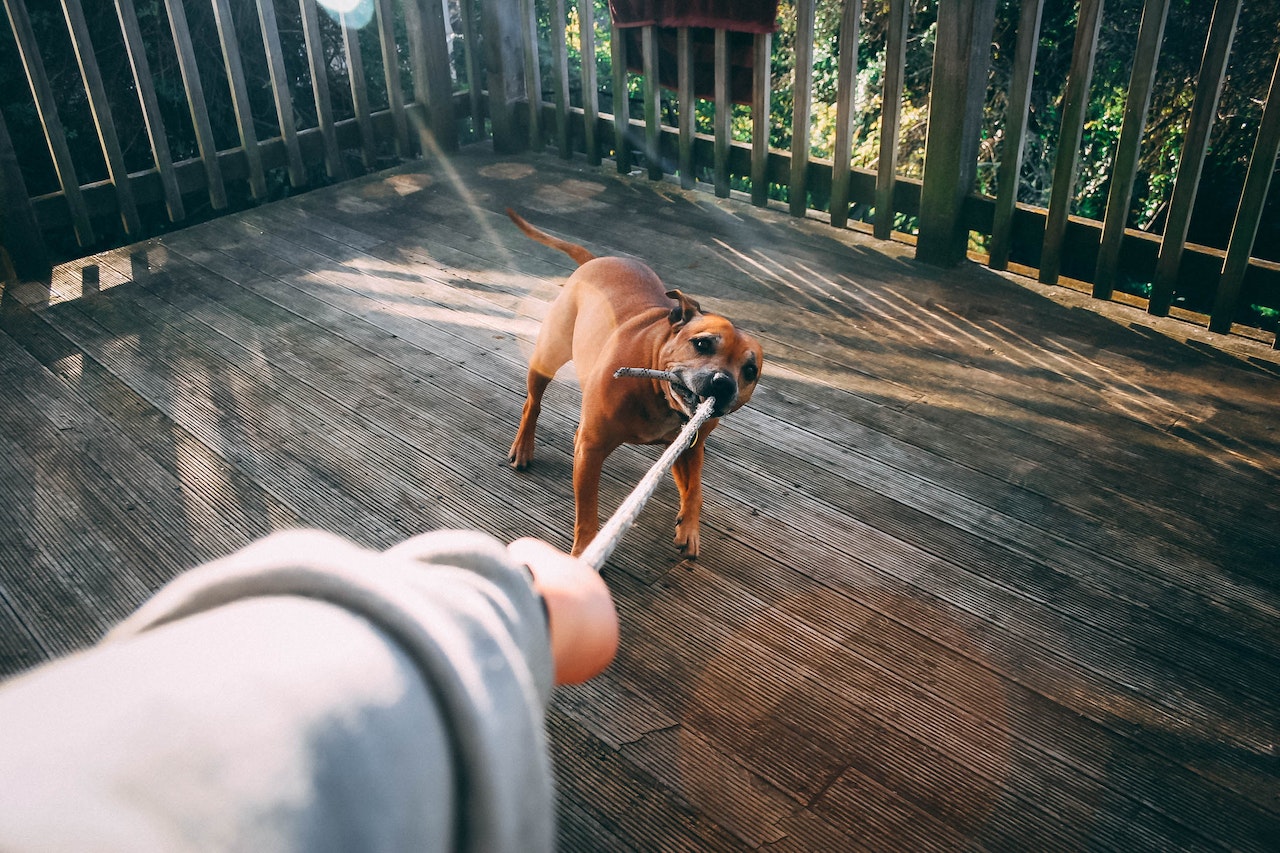
19 Oct Is Tug Of War Bad For My Dog…And If So, Why?
I played tug of war with my dog for years and years, until I started my dental residency. Then, I learned that tug of war is bad for my dog, specifically their canine teeth. Now, I preach to veterinary practitioners the need to stress avoidance of this method of bonding and playing as it can cause irreversible damage to a valuable tooth.
The Impacts of Tug of War on Dog’s Canine Teeth
Anatomically and physiologically, the canine teeth are basically the ‘hands’ of the dog and cat. They each use their canine teeth to grasp and hold items and food. In the wild, the canines are needed to grasp and tear their prey. Underneath the gumline, the tooth is surrounded by a fibrous ligament called the ‘periodontal ligament or PDL’. This ligament is basically the shock absorber of the tooth, and there are nerve fibers within the PDL that tell the brain to ‘slow it down’ and not be so aggressive with pulling and tugging under normal activity. That is all good, as the PDL stretches and compresses during normal activity as mentioned above. However, under a roughhouse tugging and pulling we do with our dogs with a large nylarope or the like, those PDL forces can be overcome and then the tooth separates from the surrounding bone because the PDL forces were overcome. This causes the tooth to become loose and out of the socket that supposed to surround it.
In addition, and more importantly, the hemorrhage of the PDL can also cause the apex of the tooth to separate itself from the blood supply to the tooth, causing the blood flow to cease within the tooth. This cessation of blood flow then over time causes the remaining n0n-vital blood within the tooth to leach out into the surrounding dentin, which is the innermost layer of a tooth surrounding the pulp cavity. This leaching occurs due to blood cells devitalizing, and the hemoglobin and the iron within the blood breaks down leading to a red-colored tooth or later in tooth damage a grey hue.
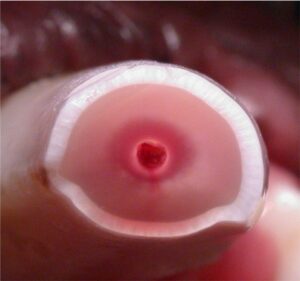
Redness around pulp cavity shows leaching of degrading red blood cells into the surrounding dentin. This causes the red hue of the tooth.
Hale wrote a hallmark article regarding the vitality of a discolored tooth(1). His study concluded that 93% of all discolored teeth are non-vital (dead). A newer study was done again in 2021 by Feagan et al indicating that almost 88% of discolored teeth are dead (2). Many of these discolored teeth were caused by the shock of tug-of-war.
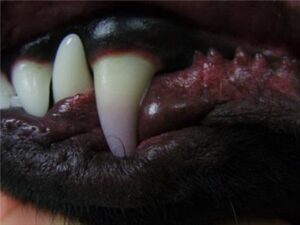
Tip to mid tooth discoloration due indicating non-vital tooth
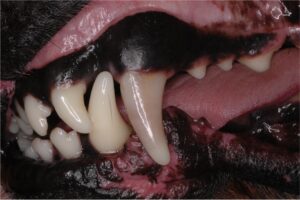
Complete tooth discoloration indicating tooth death. Dental x-rays confirmed this.
Treatment Options for Non-Vital Teeth
There are two treatment options for a non-vital tooth…root canal therapy or surgical extraction. Keeping an eye on it is NOT a viable option as your pet may be experiencing oral pain and discomfort. As the canines are the ‘hands’ of the pet, I recommend you attempt to save this tooth versus remove it. Root canal therapy is an excellent way to save a non-vital discolored tooth. We can even place a very strong full coverage crown over the tooth for added protection, that is done for many of our patients.
Avoid Tug of War to Prevent Damaging Teeth
Take home message…as fun as tug-of-war is, please avoid it with your pet. The chances of causing a tooth problem are high and this would be an unforced error on your behalf. If you notice your pet’s tooth is discolored, contact our office and send us a picture of that tooth. Saving the tooth would be idea and we can discuss treatment options.
Barden Greenfield, DVM, DAVDC Your Pet Dentist of Nashville
References:
- Hale, FA. Localized intrinsic staining of teeth due to pulpitis and pulp necrosis in dogs. Journal of Vet Dent; 2001. 18:1.
- Feigan, Bell, Snyder. Analysis and Assessment of Tooth Vitality of 102 Intrinsically Stained Teeth In The Dog. Journal of Vet Dent; 30:1.
Photo by Darcy Lawrey from Pexels


